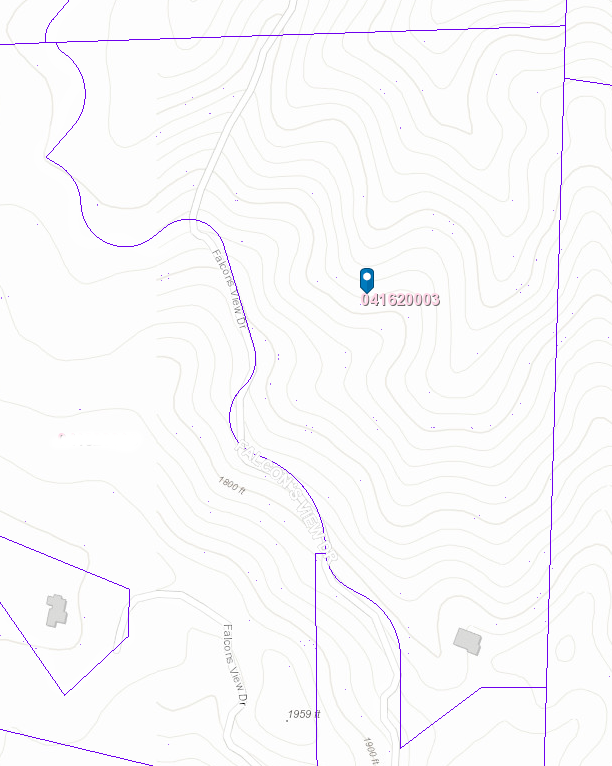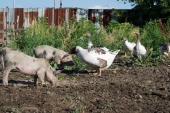Hey folks, this is a somewhat disjointed rundown of a
project that may or
may not happen. We're about to talk to the bank to see if we can get the
loan... Finger's crossed.
The
land I'm hoping to get is a 40+ acre parcel in the hills above
Redding, CA. The climate is hot and dry in the summer, cold and wet in
the winter, with some snow. The land forms a shallow valley or gentle ravine.
There is a well, house pad, and septic system installed,
and there used to be a house, but it burned down in a wildfire two years
ago. The wildfire burned most of the site and it's still recovering.
(Obviously fire management will be an important theme of whatever we do
here!)
The first thing to do will be to walk the site to get a feel for it. I
want to take notes and samples of all the plants and
trees already there.
From what I've seen there is a literal ton of
wood ready to go. Every
tree seems to need a trim, and likely not all of them survived the
wildfire that took out the original house, so those will need to come
down.
The parcel is approximately wedge-shaped with the narrow point at the top
of the valley where the house pad, well, and septic tank are located.
(That's right folks, the well head is at the top of the property. Very
convenient for getting
water to the rest of the place, eh?) I'm told the
well gives twenty gallons per minute, so that's nice. (It won't irrigate
forty acres though.) There's already a cleared and bounded
lawn area
adjacent to the pad, so there's the kitchen garden site. Probably put a
greenhouse/dome over the whole yard (it's not that big.)
There's a rivulet not too far from the house pad, so that likely becomes
the first pig wallow. I am bowled over by the pigs-make-ponds
thread!
That's one of those "why-didn't-I-know-this-sooner" kind of things.
(
https://permies.com/t/38201/Progress-Gleying-Pond-Pigs )
I want to block off the downhill side of the little creek place,
surround it in a bit of
fence, and see if the pigs can make it into a
proper little
pond. (No liner nor
concrete retaining wall needed?)
If that works I'll put the lotus in there and move the pigs to the next
little wet hollow. But I'm getting way ahead of myself.
I was looking on craigslist and saw some Kunekune piglets for sale. I
didn't know what they were, and now I can't imagine living without them.
Seriously, these critters are so friendly and mellow they make dogs seem
a little jerk-ish! Just kidding! They are really sweet though.
Okay, deep breath, (stop thinking about Kunekune pigs!)
The parcel isn't the sort of place that most people would look at and
think: Ah, a latent paradise! It's not flat. It's sloping the wrong
way. It's not the best soil. And so on... But you and I know better,
don't we? ;-)
The first year will be mostly given over to observation and grokking. I
want to work with Nature, not just dive in and do whatever. I will do
the basic things like piling scrub along contours and covering it with
dirt and mulch and planting stuff in it. There are some erosion gullies
that need some rocks thrown in them. That sort of thing.
Over time the whole place will come to be terraced.
Let me shift gears a little and tell you about the seeds I ordered. I
ordered these before I found the land, as an act of faith. One day it
occurred to me to look up
local organic/native seed companies, and before
I knew it I had ordered from three different companies:
Melons, Berries & Berry-like:
Baron Von Solemacher Strawberry
Aunt Molly's Ground Cherry
Dwarf Tamarillo
Garden Huckleberry
Mother Mary's Pie Melon
Watermelon, Golden Midget
Watermelon, Tendersweet Orange
The Three Sisters:
Waltham Butternut Squash
Three Winter Squash Mix:
Sweetmeat,
Lower Salmon River,
Delicata
Painted Mountain Flour Corn
Top Hat Sweet Corn
Lorenzo's Flour Corn
Hopi Blue Corn
Sonoran Gold Tepary Bean (I'm really excited about this one!)
Cucumbers & Tomatoes:
Lemon cucumber
Cucumber, Brown Russian
Cucumber, Crystal
Apple
Tomato, Purple Calabash
Tomato,
Mortgage Lifter
Then for fun:
Nelumbo nucifera, the Lotus
Sequoiadendron giganteum, Giant Sequoia tree
Musa velutina, the Pink Banana (this is a real plant!)
Whew!
So the tomatoes and cucumbers will go in the kitchen garden, and probably
the various combinations of the Three Sisters. I expect great things
from the Sonoran Gold Tepary bean. It's said to be the most drought
resistant crop. (No qualifications: THE most drought resistant crop!) If
it takes at all it will probably get all over.
All the various berries and melons will get planted in hugelculture
swales. Eventually the whole place will be covered in galleries of berry
bushes. Fruit and nut trees too, but mostly berry and berry-like bushes
in ranks on contour.
I figure there are three main motivations for people to do
Permaculture:
grow your own food; grow food to
sell; or restore the environment. For
me this project is mostly about the first and third motivation. I don't
think I want to market and sell food. I'll give it away, but I "lack
hustle" to be a good farmer.
The environment here isn't too messed up (not counting the effects of the
wildfire that burnt the original house down) so rather than restoring a
damaged area it's more like just modifying it to have more going on.
I want to grow my own food, but really it's much more than that. I want
to live in harmony with Nature: it's fun, easy, and fulfilling. And
once I have a stable base I can be in a position to help other people do
it too.
Thanks for reading!
TTFN,
~Simon
I can't wait to put up a sign: "Visit the Amazing Redding Sequoia Grove!
Grand Opening 3035!"
(Fifteen years to set, then another thousand to mature. 2020 + 15 + 1000.)






 7
7










 1
1








 2
2












 1
1








 1
1

















 1
1


















